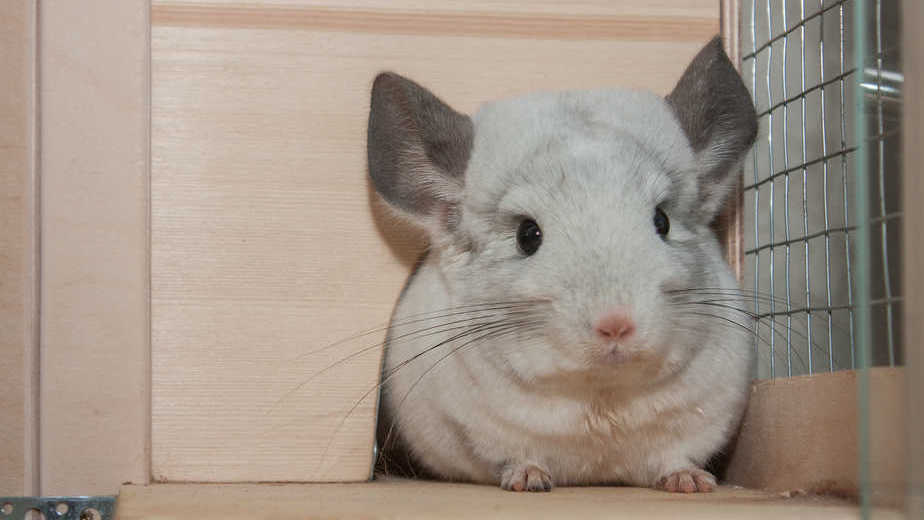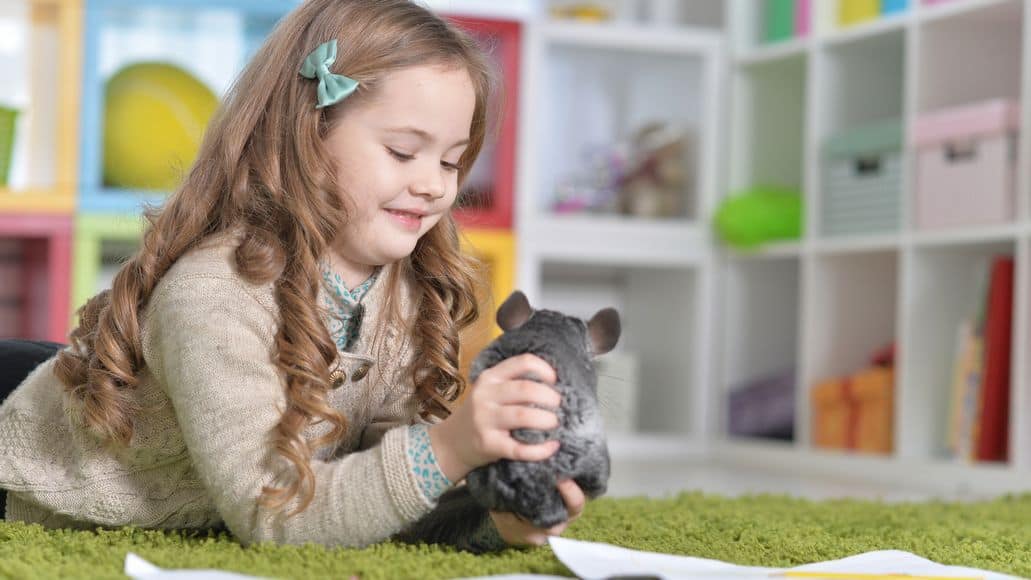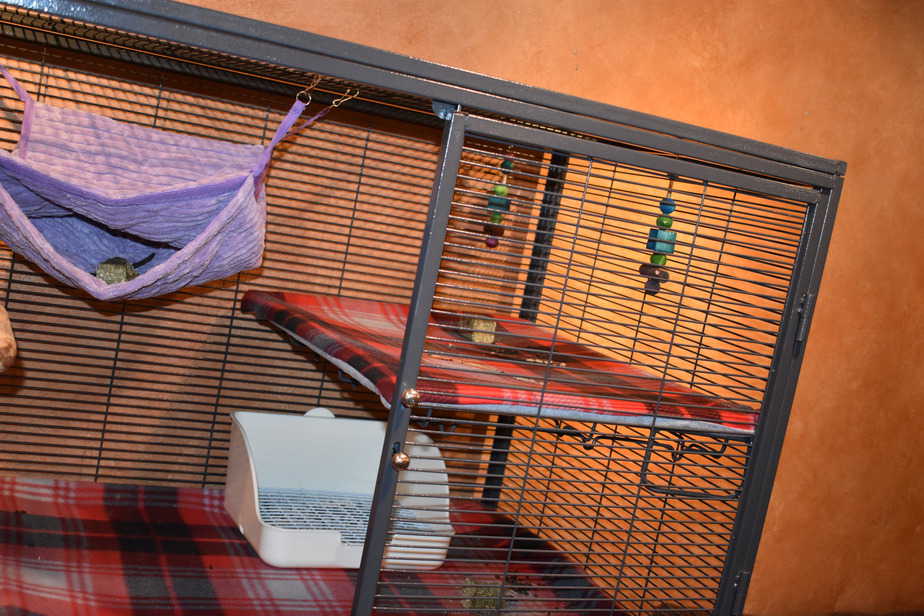
And there are usually good reasons to do this. At least during certain times of the day.
But what about chinchillas? Should you cover your chinchilla’s cage?
As you probably know by now, these little rodents are quite unique.
What goes for other animals, is often completely different when it comes to chinchillas.
And this is no exception.
Keep reading to learn if it is a good idea to cover your chinchilla’s cage, plus the reasoning behind it. Make sure you read the entire article, before you move forward with covering the cage!
Contents
Should I Cover My Chinchilla’s Cage?
No, you should not cover your chinchilla’s cage. Doing so makes it difficult for your chinchilla to understand the natural day and night cycles.
Those cycles are important for your chinchilla’s health, overall happiness, and also its breeding and feeding schedules.
Put simply, avoid covering your chinchilla’s cage so that it can remain in rhythm the way it would be in the wild. This is important for its long-term health and overall behavior and moods.
That’s the short and direct answer to the question, but I also want to touch on other essential items to keep in mind on this subject.
Why You Should Not Cover Your Chinchilla’s Cage

You should avoid covering your chinchilla’s cage. As mentioned previously, it can really throw the balance and natural patterns of your chinchilla into whack.
Clearly, this is something we want to avoid. And to be honest, there is no real reason to cover their cage in general.
It won’t reduce any noise they make inside of the cage or limit any activity. And your chinchilla just won’t enjoy it in general.
Chinchillas can see relatively well in low lighting conditions, but in general, they shouldn’t be navigating their cage in that level of darkness.
Especially due to how often they jump and climb throughout their cages. It could potentially even cause injuries.
Now that we understand why we should not cover our chinchilla’s cage, it’s also important that we discuss what you need to know about choosing the best room for your chinchilla when you arrive home from the breeder.
Choose The Ideal Room
Selecting the best room for your chinchilla is far more important that any benefit you may gain (there is no benefit, really) from covering your chinchilla’s cage.
And the light cycle plays a big role here too.
Just like you shouldn’t cover a chinchilla’s cage because of the interruption in the natural light cycle, it’s also imperative that you choose a room in your home where the natural light cycles are not interrupted.
This means it’s generally best to choose a room with at least some kind of natural light, even if it’s just a small window.
A basement is still perfectly viable, if light can enter the room. However, you don’t want to use a basement, or any other room in your home, where no light can enter.
As mentioned, this can cause issues with your chinchillas’ natural tendencies, breeding schedules, and even eating behaviors.
You also want to choose a room that can remain at ideal temperatures, in addition to one that can have some form of natural light, for a chinchilla that can remain happy and healthy for the next few decades.
Ensure You Have The Best Cage Possible
Finally, let’s talk about the cage. I know I touch on this subject all the time in other blog posts, but it is the most important thing to get right for your chinchilla.
In addition to finding the best room for your chinchilla and ensuring it gets to enjoy its natural light cycles, it’s also imperative to always provide an adequately sized cage for your new chinchilla.
They need space to maneuver.
As you know, I’m a huge fan of the Critter Nation 2 Dual Level Cage (link to review).
It’s the perfect size for a chinchilla to have plenty of space and remain agile and happy. If it’s a little out of your budget, there are a few alternatives that are almost as good, but cost a bit less.
You can see them all in my rundown of the best cages for chinchillas.
You’ll probably notice that all of those cages are made of metal. That’s because a chinchilla should not have a plastic cage. They will bite the cage and could ingest the plastic, which is harmful.
Don’t Create Social Distance With Your New Chinchilla
The last tip of the day that relates to covering a chinchilla’s cage and where to place the cage, is to understand that chinchillas are very social creatures.
They love the interaction, and if it’s at all possible, it’s advised to keep a chinchilla in a room of the home where you will be able to communicate and see them throughout the day.
At least from time to time.

Simply put, don’t isolate your chinchilla entirely in a room that you never use. Try a spare room, a mudroom, or a part of the basement where you go every and now and then.
This can help prevent issues such as boredom and perhaps even excessive chewing. It can even help to prevent more severe problems, like depression.
Always spend whatever time you can with, or at least around, your chinchilla. If time permits, of course.
Covering A Chinchilla’s Cage: Final Thoughts
To recap, never cover your chinchilla’s cage. Your chinchilla does not need, or want, to have its cage covered. Moreover, it can result in serious problems.
Covering a chinchilla’s cage can cause overheating or social isolation, and it can really mess with their natural behaviors and light cycles.
Chili and I wish you the best of luck with your upcoming journey and your new chinchillas.
Share your thoughts.
As always, I prefer that the readers and the community chime in and help each other out.
Do you have any further recommendations that you can give other readers when it comes to covering a chinchilla’s cage and how to find the most ideal room for your chinchilla?
Be sure to share those thoughts, concerns, and stories by dropping a comment below.
Thanks again for stopping by, and we will see you next time!

Patricia says
Hello! I was wondering if I should comb or brush my chin? She seems to shed her fur. She’s about 4 yo and I adopted her a couple weeks ago. If she needs groomed how about should I do this? Or not @ all? Thank you for your repy(ies)!
Josh says
I actually have an article on grooming here: http://planetchinchilla.com/chinchilla-grooming/